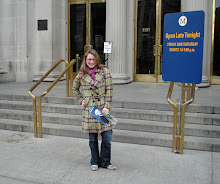 Joan Miró. Spanish, 1893-1983
Joan Miró. Spanish, 1893-1983Dutch Interior (III),1928
Oil on canvas
 Joan Miró. Spanish, 1893-1983
Joan Miró. Spanish, 1893-1983Circus Horse,1927
Tempera on canvas
Born in the Spanish province of Catalonia in 1893, Joan Miró was deeply influenced by his country's native landscape and artistic heritage. During the early part of his career, he lived in Paris, where he was associated with the French Surrealists and its practitioners, but he returned to settle in Spain after World War II. This deliberate remove from the center of the art world is symptomatic of Miró's independence, a temperament that would mark his art as well as his life. Mining the possibilities of free invention encouraged by Surrealism, Miró developed a style that drew from highly personalized and psychological references. Often beginning with a recognizable starting point, Miró transformed his subjects through whimsical color and free play with form. (from www.metmuseum.com)

























